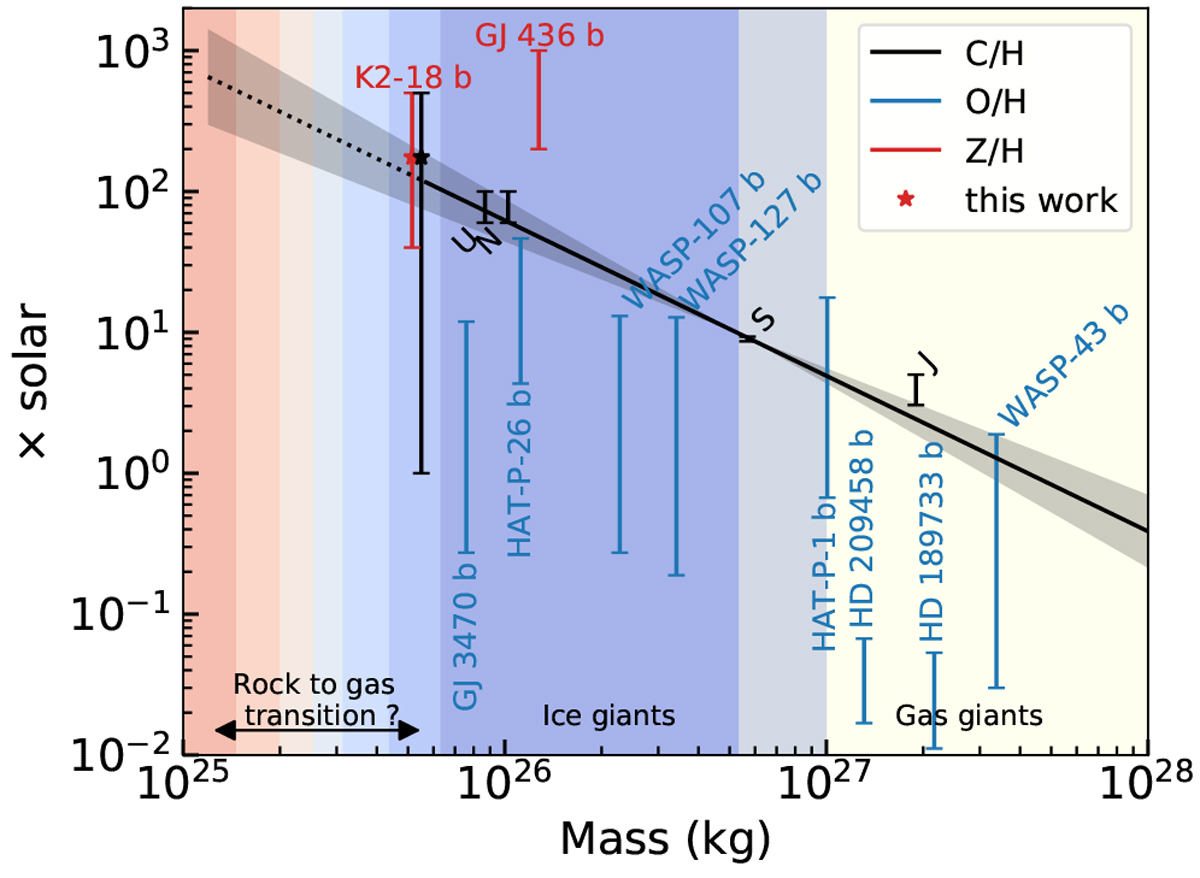Fig. 23

Atmospheric metallicity as a function of mass for a selection of planets. The Jupiter (J), Saturn (S), Uranus (U), and Neptune (N) C/H are taken respectively from Wong et al. (2004), Fletcher et al. (2009), Sromovsky et al. (2011) and Karkoschka & Tomasko (2011) (values compiled in Atreya et al. 2018). The data for GJ436b and WASP-127b are taken respectively from Morley et al. (2017) and Skaf et al. (2020), while the data for all the other planets are taken from Welbanks et al. (2019). The black area represents the 1σ C/H against mass trend for Jupiter, Saturn, Uranus, and Neptune resulting from a linear fit. The fit is log10 ((Z/H)∕(Z/H)⊙) = −1.10 ± 0.21log10(M[kg]) + 30.5 ± 5.5. The error bars of our results correspond to the simulations that were within the 1σ confidence interval against Tsiaras et al. (2019) data in the “free C/H” scenario. Our C/H results were slightly shifted to the right for clarity. The O/H ratios in the other works were estimated assuming [H2 ] + [He] + [H2O] + [CH4 ] = 1 and a solar He/H.
Current usage metrics show cumulative count of Article Views (full-text article views including HTML views, PDF and ePub downloads, according to the available data) and Abstracts Views on Vision4Press platform.
Data correspond to usage on the plateform after 2015. The current usage metrics is available 48-96 hours after online publication and is updated daily on week days.
Initial download of the metrics may take a while.


